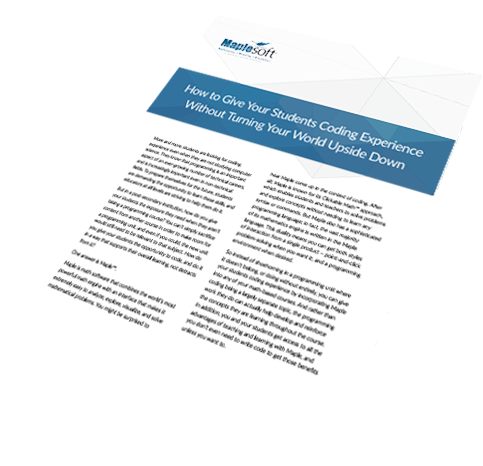
More and more, students are looking for coding experience even when they are not studying computer science. But in a post-secondary institution, how do you give your students the opportunities they need when they aren’t taking a programming course? And how to you do it in a way that supports their overall learning, not detracts from it?
One answer is Maple.
Maple is known for its Clickable Math approach, which enables students and teachers to solve problems and explore concepts without needing to learn any syntax or commands. But Maple also has a sophisticated programming language. This duality means you can get both styles of interaction from a single product: point-and-click problem-solving when you want it, and a programming environment when desired.
So instead of shoehorning in a programming unit where it doesn't belong, or doing without entirely, you can give your students coding experience by incorporating Maple into any of your math-based courses. And rather than coding being a largely separate topic, the programming work they do can actually help develop and reinforce the concepts they are learning throughout the course.

Disponible en français:
Comment offrir à vos étudiants une expérience du codage sans tout chambouler
Auf Deutsch verfügbar!
So bringen Sie Ihren Studierenden das Programmieren bei, ohne Ihre Welt auf den Kopf zu stellen